By the beginning of the 20th century, cost accounting had become a widely covered topic in the literature on business management. Cost-accounting methods are typically not useful for figuring out tax liabilities, which means that cost accounting cannot provide a complete analysis of a company’s true costs. It helps company management to make decisions and is tailored to the specific needs of each separate firm. This differs from financial accounting, which must follow a set template and is used to inform people outside the company, such as investors, about its financial performance.
The materials directly contributed to a product and those easily identifiable in the finished product are called direct materials. For example, paper in books, wood in furniture, plastic in a water tank, and leather in shoes are direct materials. Other, usually lower cost items or supporting material used in the production of in a finished product are called indirect materials.
- If an accounting cost has not yet been consumed and is equal to or greater than the capitalization limit of a business, the cost is recorded in the balance sheet.
- Continuing the example from the preceding section, the high-low method can be used to estimate the fixed and variable components of maintenance cost since the cost was identified as mixed.
- This type of cost varies depending on the number of products a company produces.
- A traditional income statement, reports an organization’s revenue and expenses for a specified period of time.
However, this variation does not allow the reverse – to revalue an asset upward. Thus, this lower of cost or market concept is a crushingly conservative view of the cost principle. Financial and cost accounting systems can be differentiated based on their target audiences. Financial accounting is designed to help those who don’t have access to inside business information, such as shareholders, lenders, and regulators.
Activity-Based Costing
One of the fundamental concept of accounting which closely relates to going concern concept. This concept states that an asset is ordinarily entered initially in the accounting records at the price paid to require it. From their analysis, they should be able to tell which products and departments are most profitable as well as recommend changes to procedures that will improve the company’s cash flow.
A cost accountant is a professional tasked by a company to document, analyze and report a company’s cost process. Companies that operate under the Generally Accepted Accounting Principles (GAAP) have to use the historical cost principle when showing their records. The principle states that accounting records on a company’s balance sheet should be at original transaction prices and should be maintained to serve as the basis for values in the financial statements. Historical cost accounting is a cost accounting method in which a company records the value of its assets in its financial statements based on the nominal price at which they were originally bought. The main aim of marginal costing is to determine the break-even point during production. Production reaches a break-even point when the total revenue of production equals total production costs.
What Are the Advantages of Cost Accounting?
Cost accountants use accounting software and ERP software to carry out their tasks and roles. To understand how throughput accounting works, you have to know what throughput is. Throughput is the amount of a product or service that a company can produce and deliver to a client within a specified period. Lean accounting helps to improve financial management practices within an organization by optimizing production practices.
Cost Controls
Accountants use accounting cost to determine the profitability and financial health of your business since you will need to determine accounting costs prior to determining accounting profit. To find out costing profit or loss by identifying with revenues the costs of those products or services by selling which the revenues have resulted. Notably, since assets are recorded at the cost of acquisition, any future increase or decrease in their values is not recorded in the balance sheet. However, an exception to this rule is the diminution in value that may arise from the depreciation of assets. Cost principle accounting emphasizes on having a record that is equal to the amount paid. When dealing with fixed assets appreciation, the main problem comes when the value by the time of purchase differs from the current time.
Unlike the Financial Accounting Standards Board (FASB)-driven financial accounting, cost accounting need only concern itself with insider eyes and internal purposes. Management can analyze information based on criteria that it specifically values, which guides how prices are set, resources are distributed, capital is raised, and risks are assumed. Overheads (i.e. indirect costs) constituted a small part of total cost in the early period of the factory system as costly machinery was uncommon during those days. Necessity of cost accounting is felt more if overheads form a significant portion of total cost as we will see in t he course of our discussion in the book. It establishes budgets and standard costs and actual cost of operations, processes, departments or products and the analysis of variances, profitability and social use of funds. For example, a property bought twenty years ago for $50,000 is sure to have appreciated.
Explicit costs are the total costs of doing business throughout the year. Explicit costs are everything from the cost of the office you rent to the salary you pay your employees. Economic cost is a step further than typical bookkeeping basics and is often used by economists to compare two separate courses of action. Economic cost is calculated by taking your accounting cost, which has already been calculated, and also subtracting any implicit costs. In simple terms, any expense that comes out of your bank account is considered an accounting cost.
It becomes practical when dealing with depreciation and its effects on the business. However, historical cost accounting is only favorable in the short term where costs are not widely different. Due to inflation, the historical cost of an asset will not necessarily be accurate at a later point in time.
Cost Accounting Methods
Giving a cost principle example can be tricky when there is no cash involved. The challenge comes in when you need to account for a trade-in and no cash is received. The record would be the new vehicle cost as the cash paid and the trade-in vehicle value. This insights and his love for researching SaaS products enables him to provide in-depth, fact-based software reviews to enable software buyers make better decisions. Throughput accounting focuses on working around these limitations and is more focused on sustaining workflow than cutting costs.
Product Costing Systems (Cost Accumulation Methods)
Cost accounting can contribute to preparing required financial statements, an area otherwise reserved for financial accounting. The prices and information developed and studied through cost accounting will likely make it easier to gather information for financial accounting purposes. For example, raw material costs and inventory prices are shared between both accounting methods. Their duties include everything from planning budgets and monitoring budget performance to setting standard unit costs based on research. They are also expected to assess the operating efficiency of all production activities and departments in an organization. Throughput accounting is one of the more recent methods in cost accounting.
Historical data for five months and the corresponding scatter plot is provided in Exhibit 1-3. Since the scatter plot clearly shows a linear relationship, maintenance cost is considered a mixed cost. The cost per cup is always $1 per unit but the total cost incurred depends on how many drinks are sold. For example, if they sell 100 drinks, the total costs are $1 times 100 equals $100. Per unit cost is always $1 but total cost changes depending on activity. Also known as marginal costing, marginal cost accounting reveals the incremental cost that comes with producing additional units of goods and services.
The cost principle means that a long-term asset purchased for the cash amount of $50,000 will be recorded at $50,000. If the same asset was purchased for a down payment of $20,000 and a formal promise to pay $30,000 within a reasonable period of time and with a reasonable interest rate, the asset will also be recorded at $50,000. Cost accounting allowed railroad and steel companies to control costs and become more efficient.
A new scatter plot may be prepared to determine if the cost is related to a different activity driver. Alternatively, the cost may increase and decrease randomly, meaning it is not fixed, variable, or mixed. If the cost is a product cost, classify the cost as direct adjusting entry example: depreciation material (DM), direct labor (DL), or manufacturing overhead (OH). A manufacturing business is a business entity that uses raw materials, parts, or other components to make a finished good. The finished goods are considered inventory in a manufacturing organization.
Marginal cost accounting is an accounting method that examines the relationship between the level of production, costs, and expenses. It focuses on economies of scale and the additional cost of each new unit of production. Operating costs are costs that are incurred in the day-to-day running of a business. They do not directly affect the level of production but without them, a business cannot operate. Maintenance costs, taxes, and utility bills are some examples of operating costs.
As a result, ABC tends to be much more accurate and helpful when it comes to managers reviewing the cost and profitability of their company’s specific services or products. Both cost accounting and financial accounting help the management formulate and control organization policies. Financial management gives an overall picture of profit or loss and costing provides detailed product-wise analysis. Activity-based costing can be very useful in identifying and eliminating ineffective production processes. However, it is a tedious method that is unsuitable for companies operating on a day-to-day basis. Activity-based cost accounting is usually for companies where an item goes through different stages of production, like automobile companies.


